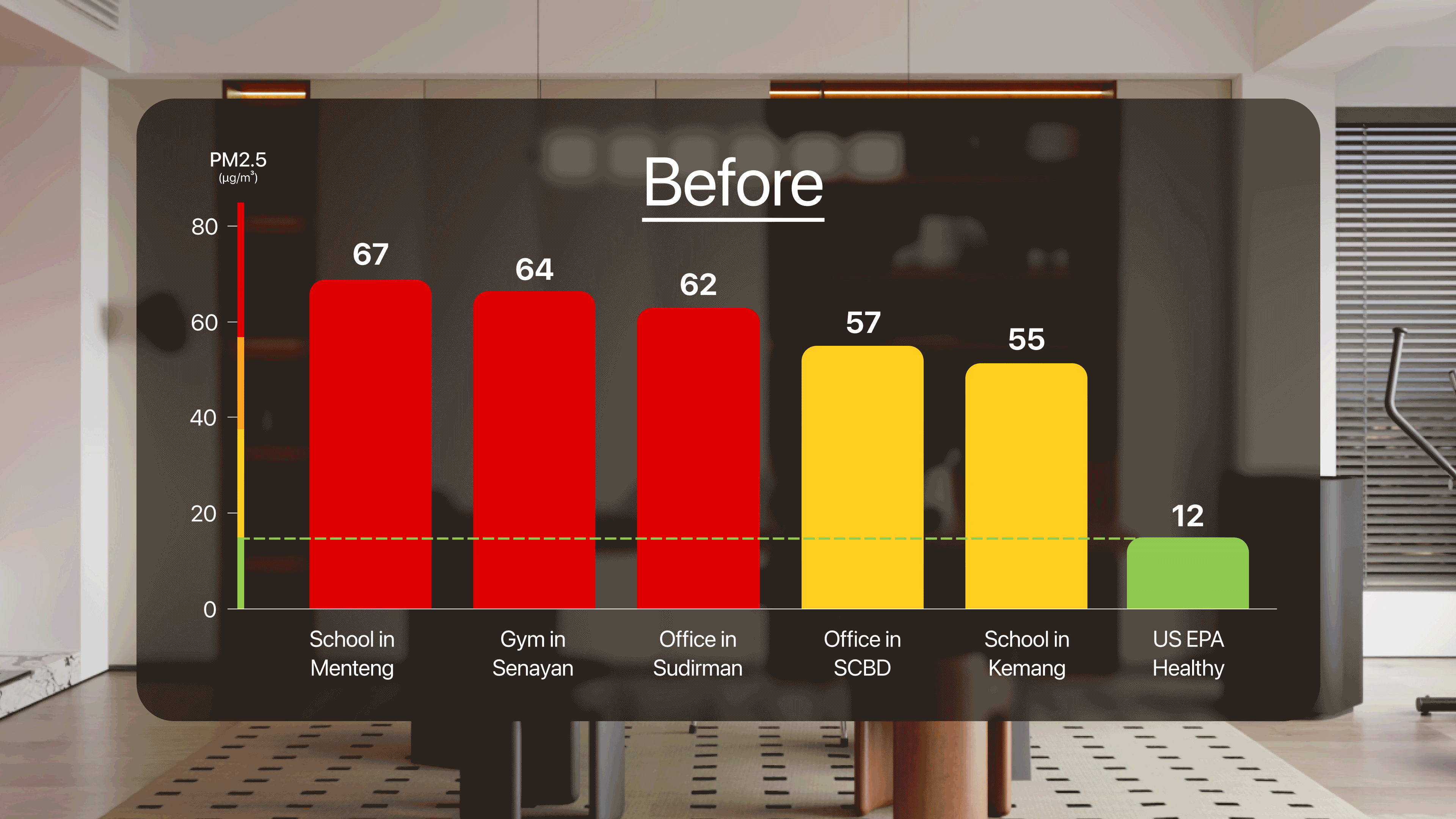Why Air Quality Is the Missing Link in the Health Equation
Good Air is the missing foundation of how healthy you feel

We plan our meals, chase steps, lift or ride, and track recovery through rings and watches.
Over the last few years, a new health language has taken over our feeds, data-driven, measurable, and optimization-obsessed.
Peter Attia, MD, reframed longevity through prevention, a mindset he calls Medicine 3.0.
Andrew Huberman translated neuroscience into toolkits for sleep, focus, and stress.
David Sinclair popularized the idea that we can slow biological aging through lifestyle.
Mark Hyman connected metabolic health to what’s on our plate.
Casey & Calley Means made us rethink how daily exposures shape how we feel.
And Bryan Johnson showed what happens when you measure everything, and let data decide what works.
Together, they built a modern framework for health:
Sleep • Nutrition • Exercise • Mental Health.
But one foundation is still missing, the one that quietly multiplies the returns of everything else.
The Missing Pillar: Good Air
Healthy Air is the base layer of modern wellness, the unseen input that affects your brain, your metabolism, and your recovery before anything else can.
Every breath carries PM₂.₅, microscopic particles small enough to slip into your bloodstream. And even if you stay indoors, outdoor pollution quietly seeps inside, through open windows, doors, and ventilation.
When PM₂.₅ rises, studies show measurable changes the same day or week:
shallower sleep, slower focus, lower performance, and reduced recovery.
You can’t out-sleep or out-train a bad air day.
What the science keeps finding

Healthier air, clearer thinking.
Office workers performed 5–10% slower on cognitive tests as PM₂.₅ and CO₂ increased.
Workplaces with better air quality see faster decision-making and fewer errors.
Cognitive scores rise as PM₂.₅ drops, even within the same day.
Healthier air, steadier nights.
Nights above 50 µg/m³ saw 11 % lower sleep efficiency on average. So, even moderate pollution quietly steals ~1 hour of rest each week.
Short-term spikes in pollution reduce deep sleep and increase awakenings, even if total sleep time looks fine.
Healthier air, better workouts.
Athletes exposed to high PM₂.₅ show reduced oxygen efficiency and slower pace times.
Polluted training days can delay recovery by up to 48 hours.
Healthier air, sharper learning.
Preschoolers had more sleep disturbances and lower cognitive scores on high PM₂.₅ days.
Cleaner classrooms or offices correlate with higher test scores and fewer absences within a week of intervention.
Good Air doesn’t just protect long-term health, it improves how you feel and perform today.
Jeong et al., Environmental Research (2025)
Allen et al., Harvard T.H. Chan School of Public Health (2022)
Cai et al., Pediatrics (2023).
Why It Matters in Polluted Cities Like Jakarta

Even on “clear” days, PM₂.₅ in major cities often sits above WHO’s healthy limits. Inside our homes, offices, and schools, indoor air mirrors 50–80% of outdoor pollution levels.
That means your “indoor comfort” often carries a silent load. The result? Foggy mornings, heavier runs, restless nights.
The good news: Healthy Air is a controllable variable. Just as we adjust diet or sleep schedules, we can now adjust our air, with the right tools, habits, and awareness.
What This Means for Everyday Life

At home:
Bedrooms feel calmer. Mornings start clearer. You wake up more rested.
At work:
Focus lasts longer. Meetings feel lighter. Energy holds through the day.
At school:
Kids concentrate better and show up more consistently.
At the gym:
Breathing feels cleaner. Recovery makes more sense.
Healthy Air isn’t a wellness extra, it’s the environment that lets your health habits actually work.
The small next step
Living better isn’t just about what you do it’s about what surrounds you.
The air you breathe sets the stage for every other choice: food, sleep, movement, mindset.
Start noticing the air where your day really happens. Make small changes, crack open windows at the right times, place a purifier in key rooms, check daily air levels before training or sleeping.
When you start thinking about air as part of your health stack, everything else works better.

Closing Thought
We’ve built routines for health: better food, smarter sleep, stronger workouts.
But Good Air is what allows those routines to work at full potential.
Once you see it as part of your health equation, you can’t unsee it, because every breath you take is either working for you or against you.
The habits you build matter.
But the air around them decides how far they go.